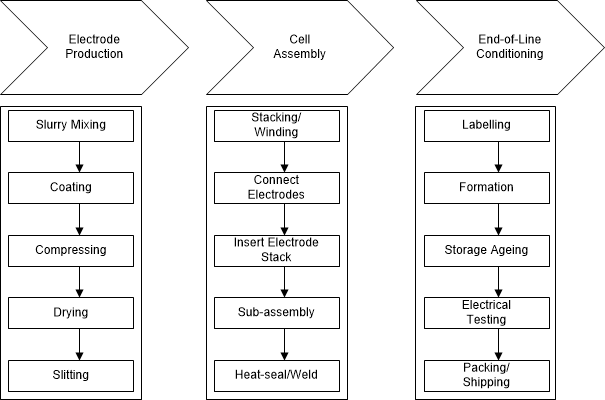TIDUEY0 November 2020
- Description
- Resources
- Features
- Applications
- 5
- 1System Description
- 2System Overview
- 3Hardware, Software, Testing Requirements, and Test Results
- 4Design and Documentation Support
- 5About the Author
1.1 Li-ion Battery Formation
Figure 1-1 shows a simplified Li-Ion battery manufacturing process. Battery testing comes at final stages of the production, in which formation is the most critical process. After the cell assembly process, each Li-ion battery goes through gradual charging, during which it forms a solid electrolyte interphase (SEI) layer that can consume significant portions of total battery capacity. Therefore, the test equipment must be able to precisely control the thickness of the SEI layer, which can bring down the capacity loss during formation to below 5%.
Tests such as self-discharge measurement and life span estimation are performed to remove defective cells during production. The battery test equipment must possess accurate voltage and current control, often better than ±0.05%, over the specified temperature range.
 Figure 1-1 Simplified Li-Ion Battery Manufacturing Process.
Figure 1-1 Simplified Li-Ion Battery Manufacturing Process.